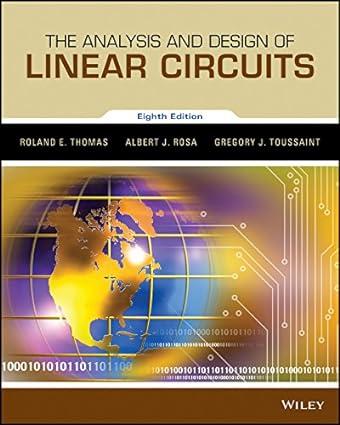The operation of a potentiometer is based on the voltage division rule. The device is a three-terminal
Question:
The operation of a potentiometer is based on the voltage division rule. The device is a three-terminal element that uses voltage (potential) division to meter out a fraction of the applied voltage. Simply stated, a potentiometer is an adjustable voltage divider. Figure 2–42 shows the circuit symbol of a potentiometer, photos of three different types of actual potentiometers, and a typical application.
The voltage υO in Figure 2–42
(c) can be adjusted by turning the shaft on the potentiometer to move the wiper arm contact. Using the voltage division rule, the voltage
υO is found as

Adjusting the movable wiper arm all the way to the top makes R1 zero, and voltage division yields

In other words, 100% of the applied voltage is delivered to the rest of the circuit.
Moving the wiper all the way to the bottom makes R1 equal to RTOTAL, and voltage division yields

This opposite extreme delivers zero voltage. By adjusting the wiper arm position, we can obtain an output voltage anywhere between zero and the applied voltage υS.
When the wiper is positioned halfway between the top and bottom, we naturally expect to obtain half of the applied voltage. Setting R1 = 1/2 RTOTAL yields

as expected. The many applications of the potentiometer include volume controls, voltage balancing, and fine-tuning adjustment
Step by Step Answer:

The Analysis And Design Of Linear Circuits
ISBN: 9781119235385
8th Edition
Authors: Roland E. Thomas, Albert J. Rosa, Gregory J. Toussaint





